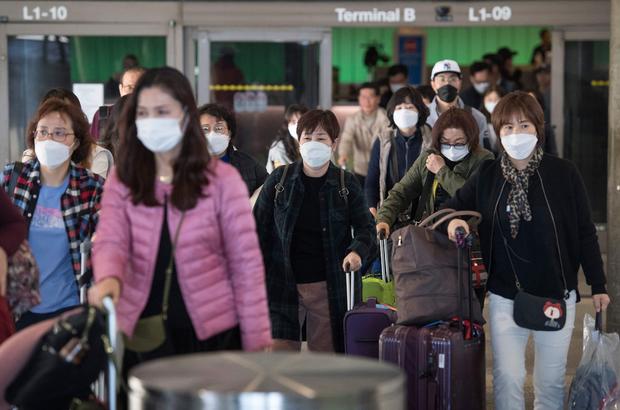Do face masks really protect against coronavirus and flu? How to prevent virus spread
[ad_1]
As cases of coronavirus rise, some people are doing all they can to try to protect themselves against the potentially deadly virus — and the face mask industry is booming because of it. One surgical mask manufacturer ran out of its stock of masks in China and was working overtime to meet demand from worried Chinese citizens who were urged to wear masks in public.
But do these masks actually prevent illnesses like the coronavirus from spreading?
When it comes to protecting against the flu virus, “It can’t hurt and it might help,” the Mayo Clinic says.
Wearing a surgical mask may help prevent influenza, according to some studies, as the virus spreads through droplets in the air when an infected person coughs, sneezes or talks. A mask could protect you from inhaling these droplets if it were worn consistently and fully covered the mouth and nose.
The coronavirus, while not the flu, does cause flu-like symptoms in those who have contracted it. Health officials believe the virus was initially transmitted from animals to humans, but that human-to-human transmission of the illness is now occurring.
The U.S. Centers for Disease Control and Prevention only recommends face masks for people who are sick with the virus or believe they may be infected, and for people who live with or care for them. There is no recommendation for the general public to start wearing face masks.
At a news conference Tuesday, Heath and Human Services Secretary Alex Azar said wearing a face mask is unnecessary for most people.
“In the United States, the risk to any individual American is extremely low,” Azar said.
Dr. Frank Esper, a pediatric infectious disease specialist at the Cleveland Clinic, said some really sick people should wear a mask.
“If they are coughing, if they are feeling like they have symptoms, we do ask them to put on mask when they are coming to our waiting room or ER or into a public space,” he said. “It helps prevent the spread of infection.”
MARK RALSTON/AFP via Getty Images
Esper and other experts say washing your hands frequently is the best way to prevent the spread of illnesses like the flu. The CDC advises washing your hands often with soap and water for at least 20 seconds, or use an alcohol-based hand sanitizer that contains at least 60% alcohol if soap and water are not available.
You should also avoid touching your eyes, nose, and mouth with unwashed hands, avoid contact with sick people, cover your mouth when you cough and sneeze, and disinfect objects and surfaces frequently, the CDC says.
So far, the coronavirus has sickened thousands of people, mostly in China, and spread to more than 15 countries around the world. As of Wednesday, five cases have been confirmed in the United States and nearly 100 people are being tested for possible infection.
Health officials are concerned the rapid spread of the virus could mimic the outbreak of the SARS virus (Severe Acute Respiratory Syndrome) in the early 2000’s, during which many people also wore masks for protection.
Following the SARS outbreak, which also originated in China, researchers in Australia wanted to test data that suggested transmission of the viral respiratory infection was significantly reduced with the use of face masks as well as other infection control measures.
The study, published in the International Journal of Infectious Diseases in 2008, found that masks were 80% effecting in protecting against clinical influenza-like illness when worn consistently. There wasn’t much difference between the two types of masks tested — P2 masks and surgical masks — according to the study. However, the researchers also noted that “compliance with mask use was less than 50%,” meaning half the people in the study did not actually keep wearing them as directed.
[ad_2]
Source link











